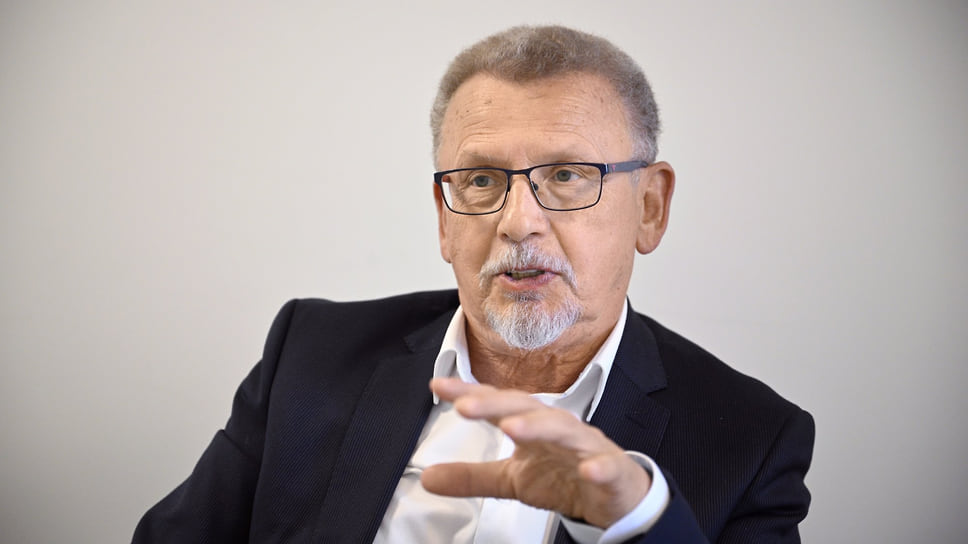Opinion | Identify yourself with autism and ADHD is very easy on Tiktok
/s3/static.nrc.nl/images/gn4/stripped/data108959604-ac80f2.jpg|https://images.nrc.nl/WC8Lo6aMEBCtevAdZBqiY9sBYt0=/1920x/filters:no_upscale()/s3/static.nrc.nl/images/gn4/stripped/data108959604-ac80f2.jpg|https://images.nrc.nl/SAgUAdzT0WLU2lSo7vZNiwjANLA=/5760x/filters:no_upscale()/s3/static.nrc.nl/images/gn4/stripped/data108959604-ac80f2.jpg)
A diagnosis does not always help you further: in her warning about diagnosis exhibition, the Council for Public Health and Society focused primarily on the growth of medical diagnostics last week. But if you look closely, you see a wider trend, which is not discussed much but contributes strongly to the ever -increasing diagnostic culture.
I am talking about the growing role of online communities in promoting disease labels. The diagnosis expansion is not only set in consultation rooms, but especially on social media. ADHD and autism are the most striking as popular self -diagnoses, but also anxiety disorders and trauma are increasingly imposing. Tiktok diagnostics and Reddit self-help groups are increasingly determining how people understand themselves. In these places people light each other culturally: symptoms are packaged as memes, encrypted into content, spread over slides and thus claimed, shared and empowered.
Read also
Increase diagnoses and screening must stop, says advisory body RVS. ‘This way people become unnecessary cancer patients’
Between cat pictures
Nowadays we acknowledge that the online world has been driven into our real world, often in a negative way. It is not for nothing that we drag our children away from screens, point to the effects on sleep and happiness in life. Then why are we talking to a lesser extent about the influence of online communities on the distribution of diagnoses?
This is not a marginal dynamic. Online ADHD and autism accounts have millions of followers. Take The Account Adhdoers With nearly two million followers on Instagram. This is an account filled with cat pictures that suggests that ADHD people are quickly over a relationship break, and that you have ADHD if you are bad at mathematics, creative and forgetful. On Tiktok it goes one step further. The hashtag #autism delivered up to and including 2023 Already 11.5 billion views on And that number will now be many times larger, especially if you also bring all hashtag variants.
Remarkably, for a label that once had a place in the cultural margin, linked to extreme behaviors. Now the tone is different. Scroll through the videos and you will see how autism is re -checked as a collection of fun features – wonderful but rarely really disproportionate. As In a recent popular Tiktok: « Hi, I am autistic. I have set up several companies, launched a top 100 podcast-and yes, I can go to the toilet without help. »
Ecosystems
The accompanying communities create a self -confirming ecosystem in which symptoms are shared and strengthened, often thickened and celebrated, creating a sense of common identity – an identity that in turn attracts others to become part of the group.
These online subcultures spread a kind of gospel of recognition: « If you have ever felt like your head with one hundred and twenty tabs, then you probably have ADHD. » Or about autism: prefer not to go to parties, get stimulated from neon light. They are all valid experiences, but in this form they are also incredibly generic. And if the social reward is large enough – recognition, understanding, community, perhaps even compensation at work or study – then the step towards identification is quickly taken.
So the diagnoses are shared daily by thousands of young people as confirmation: you see, I am also neurodivergent. It is contagious, it is reassuring, it is easy to share. But it is also problematic. Because these diagnoses are increasingly not something you have – they are something that you convey. What you can claim, display. A lifestyle With its own T-shirt line« »I am neurospicy! » or ‘ADHD is My Superpower. ‘
In addition, there is an uncomfortable economic reality. The social normalization and celebration of these disorders has led to a lucrative industry of self -help books, coaches, therapists, seminars, webinars and merchandise. The commercial interests no longer limit themselves to the pharmaceutical industry. A perverse stimulus assumes: the more people recognize themselves in broad, vague symptoms that are presented online, the greater the market for these services and products becomes.
Social contamination
The term ‘social contamination’ quickly evokes resistance, but in psychology it is a recognized phenomenon. Think of the Werther effect, where media reporting on suicide leads to more suicides among young people. That is why, after reports on suicide, it is important to point out to viewers or readers who struggle with such thoughts to prevent resources to prevent copycat behavior. But at least for suicide you have to do something – a boundary that is not just exceeded. Copying a label, on the other hand, is easier: you just have to claim it.
The tragic thing is that people with severe, disleasing forms of ADHD, autism or anxiety disorders often disappear out of the picture. Apart from exceptions, media prefer to serve light, inspiring stories than the painful reality of serious suffering. After all, their audience would rather experience recognition than it is confronted with alienation.
It is precisely the people with heavier forms of spiritual suffering that benefit from a fairer conversation about how their disorders have become consumer identities. Because they end up in one hope with people who suffer from mild complaints, making their complex problems only a variant of the popular diagnosis.
They disappear into a growing gray mass of self -proclaimed fellow sufferers. The care becomes overloaded when people with relatively mild or vague complaints rely on the system.
Attention
It is understandable why many care providers, journalists and parents hesitate to explicitly discuss this topic. Nobody wants to give the impression that he is ‘against’ neurodivergent people.
But that is not at all what is needed. We must acknowledge that the expanding diagnostic culture has real consequences in the real world: for how we organize care, for how we yield solidarity and for whom we still recognize as a patient at all.
We have to bring the ability to see that there is a difference between people who seriously suffer from a condition and people who mainly seek a connection with a cultural movement. Both deserve attention, but not in the same way.
Read also
‘Tiktok movies about my diagnosis help me to feel less alone’

:format(webp)/s3/static.nrc.nl/images/gn4/stripped/data130911212-cde5be.jpg)
:format(webp)/s3/static.nrc.nl/bvhw/files/2023/10/data106584117-f505cf.jpg)
/s3/static.nrc.nl/images/gn4/data133839134-0c9b47.jpg)
:format(jpeg):fill(f8f8f8,true)/s3/static.nrc.nl/taxonomy/bf9b707-commentaar-itemafbeelding-2024.png)
/s3/static.nrc.nl/hpe/2cca92e-web-1706BUI_Iran_schade2.jpg)




